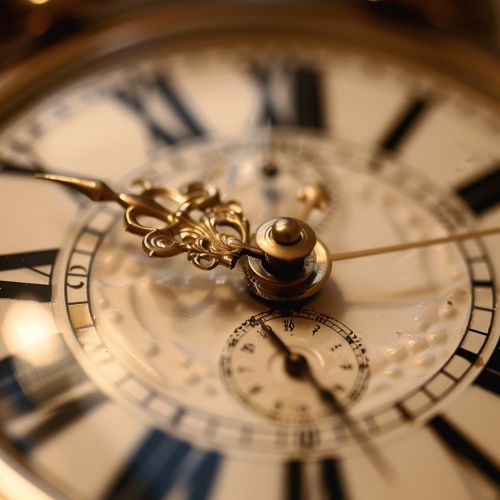Temporal Cohesion
Definition
Temporal cohesion refers to the logical organization of events, actions, or states based on their occurrence in time. It is a fundamental concept in various fields such as linguistics, computer science, cognitive psychology, and narratology, where it is used to analyze and understand the structure and progression of narratives, discourse, and complex systems.


Temporal Cohesion in Linguistics
In linguistics, temporal cohesion is a vital aspect of discourse analysis. It involves the use of temporal markers, such as tense, aspect, and temporal adverbs, to establish a coherent sequence of events or states in a discourse. Temporal cohesion helps in maintaining the continuity of a text, making it easier for the reader or listener to follow the progression of ideas or events.
Temporal Markers
Temporal markers are linguistic elements that indicate the time of an event or state. They include verb tenses, temporal adverbs (e.g., 'now', 'then', 'later'), and temporal conjunctions (e.g., 'before', 'after', 'while'). These markers are crucial in establishing temporal cohesion in a text.
Tense and Aspect
Tense and aspect are grammatical categories that express the time of an event or state relative to the time of speaking or writing. Tense indicates when an event or state occurs (past, present, or future), while aspect shows the internal temporal constituency of an event or state (e.g., whether it is ongoing, completed, or repetitive). The correct use of tense and aspect is essential for achieving temporal cohesion in a text.
Temporal Cohesion in Computer Science
In computer science, temporal cohesion is a measure of how closely the operations in a module are related in time. It is a type of cohesion used in software engineering to assess the quality of a software module.
Temporal Cohesion in Software Modules
A software module with temporal cohesion performs operations that are related in time, i.e., they are activated together during the execution of a program. For example, a module that initializes a set of variables or a module that performs all the operations required to close down a system exhibits temporal cohesion.
Temporal Cohesion and Software Quality
Temporal cohesion is considered a weaker form of cohesion in software engineering. Modules with high temporal cohesion may be difficult to maintain and reuse because the operations in the module are not necessarily related by function. However, in some cases, temporal cohesion may be necessary due to the specific requirements of a system.
Temporal Cohesion in Cognitive Psychology
In cognitive psychology, temporal cohesion refers to the ability to perceive and remember the sequence of events in a narrative or a series of actions. This ability is crucial for understanding and predicting the world around us.
Temporal Cohesion and Memory
Our memory system relies on temporal cohesion to store and retrieve information. For example, episodic memory, which is the memory of autobiographical events, is organized in a temporal sequence. This temporal organization helps us remember the order of events and make sense of our experiences.
Temporal Cohesion and Perception
Temporal cohesion also plays a role in our perception of the world. Our brain uses temporal information to establish causal relationships between events and to predict future events. For example, if we hear a sound followed by a visual flash, our brain will perceive these two events as causally related if they occur close in time.
Temporal Cohesion in Narratology
In narratology, temporal cohesion refers to the chronological organization of events in a narrative. It is a key element in the structure of narratives, influencing how a story is told and understood.
Temporal Cohesion and Narrative Structure
Narratives rely on temporal cohesion to create a logical sequence of events. This sequence can be linear, with events presented in the order they occurred, or non-linear, with events presented out of order. Regardless of the order of events, temporal cohesion is maintained through the use of temporal markers and narrative techniques such as flashbacks and foreshadowing.
Temporal Cohesion and Narrative Comprehension
Temporal cohesion is crucial for the comprehension of narratives. It helps the reader or listener follow the progression of events and understand the relationships between them. Disruptions in temporal cohesion, such as sudden time jumps or flashbacks, can create suspense or surprise, but they can also make a narrative more difficult to follow.
